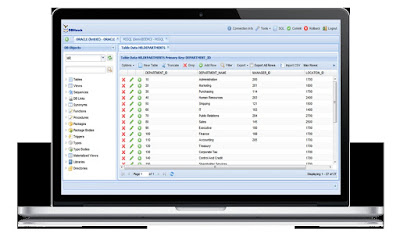Creating
and building SQL queries for your databases should be easier with a web-based
online SQL editor. Even with minimal knowledge of SQL and other query
languages, the online SQL editor lets you manage your databases more conveniently
without installing software on your computers. The web-based SQL client is easy
to use and provides you with a simple tool to create and edit complex SQL
queries for all the databases you are managing in your organization. The best
online SQL editor is supported by all commonly used databases, including MySQL,
Oracle, and PostgreSQL. This way, you get a versatile platform for creating any
form of SQL query without writing a line of code. You can leave everything to
the intuitive interface when you need to build queries or add conditions.
There
are many ways that an online SQL
editor can make database analysis more convenient and efficient. It lets
you execute and explain plans, especially when you need to troubleshoot
performance issues. Use the online SQL editor to see how certain queries were
executed, and run statements like SELECT, DELETE, INSERT, and UPDATE. The same
editor lets you execute SQL queries and stop long-running queries, too. The
online SQL editor lets you open several editor windows at a time and execute
multiple SELECT statements simultaneously. Leave it to the platform to execute
the statements and display their results in unique tabs.
One
of the best online SQL editors lets you access both on-premise and cloud-hosted
databases. Likewise, the web-based editor can be deployed on-premise or on the
cloud. Either way, it can still be accessed through your web browser. The
online SQL editor comes with reporting tools to aid business data analysts in
generating dashboards and reports. The comprehensive platform comes with a job
scheduler, database report designer, and query builder, all of which can be
used with simple point-and-click actions.
Blog Source URL: https://www.datasparc.com/overview-online-sql-editor/



